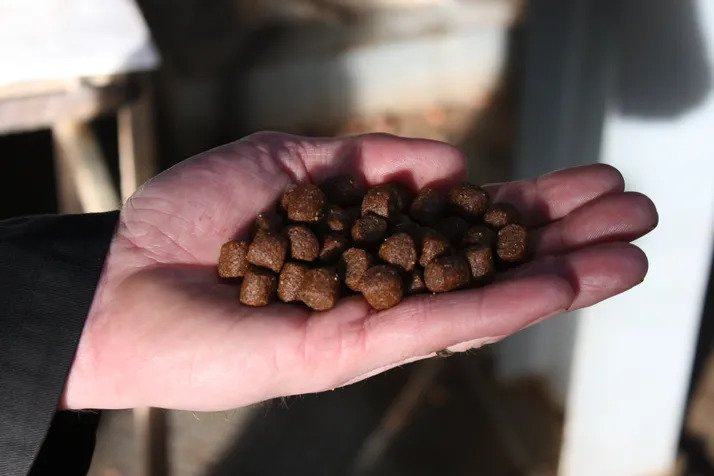
Capturing Carbon for The Aquafeed Sector
| Thu, 26 Dec 2019 - 09:30

As Skretting explained, the FAO forecasts that by 2030 there will be a 30 million tonne increase in aquaculture production, which will require an additional 45 million tonnes of feed raw materials. To ensure that the sector can maximize its contribution to sustainably feeding a population that will reach up to 10 billion people by 2050, there is a fundamental need to overcome
Through its mission of "Feeding the Future", the feed giant is focused on increasing the flexibility of the macro- and micro-ingredients in its aquaculture feeds. A key aspect of this ambition mission is to develop and support a circular bioeconomy, where previously under-valued or under-utilized ingredients or nutrients can re-enter the food chain.
Fitting closely with this ambition, Skretting is working with companies developing alternative protein ingredients, one of which is Kiverdi, a California-based a company using unique NASA-inspired carbon transformation technology to solve global issues. Kiverdi’s CO2 aquafeed solution converts CO2 into protein for use in aquaculture feed through a single cell bioprocessing. The company is working closely with Skretting’s parent company Nutreco, through its innovation division NuFrontiers, and see a bright collaborative future after the pilot phase.
“NuFrontiers and Skretting have been working closely with Kiverdi through the different stages of development and fish trials are ongoing,” says May-Helen Holme, salmonid nutrition department manager at Skretting Aquaculture Research Centre (ARC). “The protein produced using this process is concentrated and ideal for carnivorous fish. It also has the potential to significantly reduce the carbon footprint of our feed, which is something we are committed to doing.”
Kiverdi’s CO2 aquafeed technology uses proprietary bioreactors, CO2, nitrogen, hydrogen, water and nutrients that are combined with biocatalysts in a gas process, where these different elements are converted into protein-rich biomass. The CO2 can come from any industry source that has been cleaned to food-grade, the same as is found in carbonated drinks. The process uses renewable energy to further enhance the sustainability credentials.
“CO2 aquafeed offers a protein feed solution that is nutritionally comparable to traditional fishmeal but can be scaled quickly, efficiently and without the need for wild-caught fish,” says Dr. Lisa Dyson, CEO, and founder of Kiverdi. “Our technology takes CO2 out of the air and inserts the carbon back into the food chain, driving a circular bioeconomy and reducing pressure on finite resources, like wild-caught fish. At Kiverdi, we share a vision of a cleaner, more secure, and wholly sustainable tomorrow.”
While the application of sustainable novel ingredients in aquafeeds – both through replacement and interchange – is recognized as a viable means to overcome the dependence on any single ingredient, the biggest challenge facing innovations in this space is reaching commercial scale.
Kiverdi and Skretting are optimistic that the extended value for fish producers will see them jump on board and answer the rising consumer demand for sustainable food.
“We are excited to see what the future holds and are committed to our project with Kiverdi. From a sustainability viewpoint it’s a perfect protein,” says Viggo Halseth, chief innovation officer at Nutreco. “It requires very little land, and can be produced close to consumption. Our planet is warming, largely caused by an excess of CO2 in the atmosphere. In addition, as the population continues to grow we are also approaching a global food crisis. This technology holds a wealth of opportunity to be one of the many solutions to these challenges of our time.”
Source: The Fish Site






















